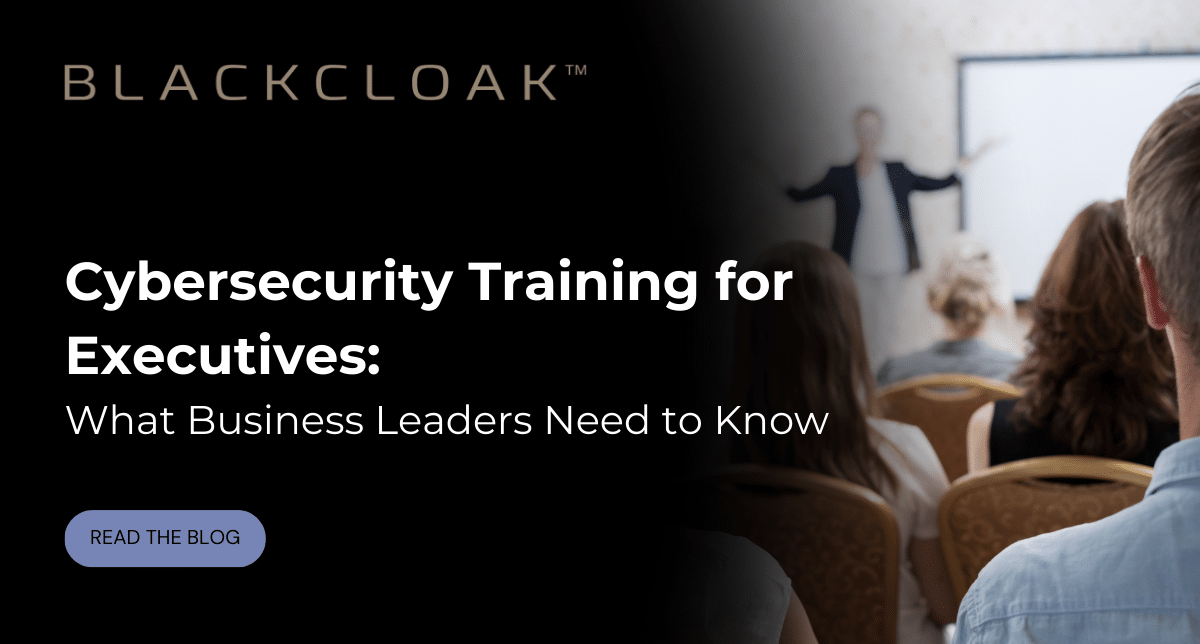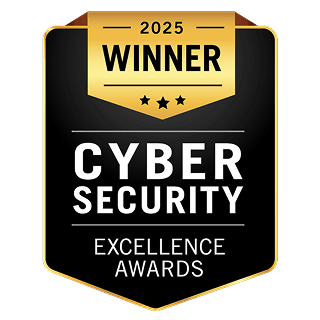Cybersecurity Training for Executives: What Business Leaders Need to Know

In an era marked by high-profile cyber breaches, ransomware attacks, and violence committed against high-profile enterprise employees, the imperative for focused cybersecurity training for executives has escalated dramatically.
For CISOs and enterprise cybersecurity specialists, crafting a tailored cybersecurity training program for your organization’s executives is not just a precaution—it is a strategic imperative. Here’s how to educate your business leaders to arm themselves against sophisticated cyber threats.
1. Understanding the Unique Risks to Executives
Executives are highly prized targets for cybercriminals due to their high visibility, access to sensitive information, and authority to make impactful decisions. In many ways, the threats executives face are far more complex and potentially impactful than those experienced by other employees.
2. Tailored Cybersecurity Training: Why One Size Does Not Fit All
Standard cybersecurity training modules, while useful, often miss addressing the nuanced threats faced by those at the helm of organizations. Cybersecurity training for executives must address the high-effort, complex scams their high-level-access accounts are often subjected. Such training should encompass:
- Advanced Phishing and Social Engineering Defense: Executives need to learn and recognize the advanced deception tactics that go beyond typical phishing emails. Each year, spearphishing, whaling, and other executive social engineering attacks grow in both sophistication and number. AI has only improved these attacks’ range and capabilities.
- Mobile Security Practices: Considering the ubiquitous use of smartphones and tablets among executives, robust training in securing these devices is vital. It’s important to note that in 2019, even Amazon CEO Jeff Bezos’ phone was hacked via a malicious WhatsApp message, highlighting this vulnerability impacts even those at the highest levels of global corporate leadership.
- Incident Response Leadership: Beyond threat prevention, executives must be adept at leading an effective response during a cybersecurity incident, minimizing damage and leading recovery efforts.
3. Bridging the Work/Home Cybersecurity Divide
As the lines between work and home environments continue to blur, especially in the age of remote work, understanding the cybersecurity risks that executives face in both settings has become crucial.
Executives often access the same sensitive information from home as they do at work, but without the robust cybersecurity defenses typically found in corporate environments. Executives must know how to extend corporate-level security practices into the home setting.
The Extended Attack Surface
With executives working remotely, the attack surface that cybercriminals can exploit has significantly broadened. Executives must recognize that the cybersecurity policies and tools they rely on in the office are just as necessary, if not more so, when working from home.
Implementing Robust Home Cybersecurity Practices
To safeguard both personal and company data, executives should implement the following practices at home:
- Secure Network Setup: Use a virtual private network (VPN) to secure remote connections and ensure home Wi-Fi networks are properly secured with strong passwords and encryption.
- Device Security: Apply the same security measures to personal devices as are used in corporate environments. This includes up-to-date antivirus software, multi-factor authentication, and regular security patches.
- Physical Security Measures: Just as in the office, sensitive information should be physically secured at home to prevent unauthorized access. This includes locking devices when not in use and using privacy screens and secure storage for physical documents.
- Continuous Education: Cybersecurity training should not halt at the office door. Regular updates and training sessions that address the specific challenges of remote work can help executives stay alert to emerging threats.
Consistency Across Environments
One of the major challenges for executives is ensuring that the cybersecurity posture they maintain at home mirrors that of their work environment. This consistency is critical in preventing breaches that could occur due to lapses in security when outside the corporate network. Companies should strive to provide executives with the tools and knowledge necessary to seamlessly extend their security practices into their home offices.
Other Key Factors to Consider for Executive Cybersecurity Training
Incorporating Real-World Scenarios
To effectively prepare executives, training must include realistic, scenario-based exercises that mimic actual cyberattacks. These simulations should challenge executives to make quick, informed decisions to avoid and mitigate threats. These activities can be beneficial to help executives understand their own cybersecurity and corporate cybersecurity as a whole.
Allowing executives to participate in regular tabletop exercises, red teaming, and penetration testing can provide practical experience and help refine response strategies under controlled conditions.
Leadership and Culture
Executives play a pivotal role in embedding a culture of cybersecurity within an organization. They must lead by example, promoting and upholding cybersecurity best practices. Their commitment to cybersecurity awareness must be visible and unwavering, setting a standard for all employees to follow.
By setting strict cybersecurity standards on the executive level, corporate cybersecurity teams can ensure a trickle-down approach to a robust cybersecurity culture.
Partnering with Experts: BlackCloak Executive Cybersecurity
To ensure the highest quality of training, consider having your executive team collaborate with cybersecurity experts who can provide deep insights into current threat tactics and help design compelling, effective training programs for senior leadership. Effective cybersecurity training for executives goes beyond mere risk mitigation; it empowers your organization’s leaders to make decisions that fortify defenses and enhance organizational resilience.
Interested in learning more about what customized, realistic, and ongoing cybersecurity solutions for executives look like? Contact BlackCloak to start a robust corporate executive cybersecurity strategy in today’s digital age.









